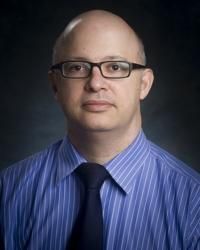Article
CAR T-Cell Therapy-Associated Toxicities Could Be Mitigated With Anakinra Prophylaxis in Multiple Myeloma
Author(s):
The incidence of grade ≥2 cytokine release syndrome was lower in patients with relapsed or refractory multiple myeloma who received anakinra prophylaxis with orvacabtagene autoleucel, a B-cell maturation antigen-targeted CAR T-cell therapy.
Luciano J. Costa, MD

The incidence of grade ≥2 cytokine release syndrome (CRS) was lower in patients with relapsed or refractory multiple myeloma (RRMM) who received anakinra (Kineret) prophylaxis with orvacabtagene autoleucel (orva-cel), a B-cell maturation antigen (BCMA)-targeted CAR T-cell therapy.
The data, which were presented at the European Hematology Association (EHA) 2021 Virtual Congress, also showed that the use of anakinra prophylaxis had no adverse effect on the incidence of neurological events (NEs), infection, macrophage activation syndrome/hemophagocytic lymphohistiocytosis (MAS/HLH), orva-cel expansion or disease response.
Thirty-three patients with RRMM who had previously received at least 3 prior lines of therapy were sequentially enrolled onto the phase 1/2 EVOLVE study (NCT03430011). Anakinra 100 mg was administered subcutaneously the night prior to orva-cel infusion, 3 hours before the infusion on day 1 and every 24 hours on days 2-5. If patients developed CRS, the dosing was increased to every 12 hours.
The median follow-up was 3 months for the anakinra prophylaxis arm (n = 14) and 8.8 months in the non-anakinra prophylaxis arm (n = 19). In the anakinra prophylaxis and non-anakinra prophylaxis arms, the median number of prior regimens was 6 and 5; bridging therapy was used in 57% and 68% of patients, respectively. The total frequency of CRS was similar in the two groups, however there were less grade 2 events in patients receiving anakinra prophylaxis (HR = 0.54; 95% CI, 0.21-1.38). Tocilizumab (Actemra) and corticosteroid use was numerically lower in patients treated with anakinra prophylaxis.
“Most baseline demographics and disease characteristics were similar between groups,” said Luciano J. Costa, MD, Associate Director for Clinical Research, O’Neal Comprehensive Cancer Center at University of Alabama at Birmingham School of Medicine, during a presentation of the findings. “But potentially important differences were noted in measurable serum M-protein, serum free light chain only, extramedullary plasmacytoma and lactate dehydrogenase above the upper limit of normal.”
After a 2-month efficacy assessment, the objective response rate (ORR) was 100% in the anakinra prophylaxis arm and 95% in the non-anakinra prophylaxis arm.
“At month six after orva-cel treatment, 87.5% of anakinra prophylaxis patients and 62% of non-anakinra prophylaxis patients retained detectable CAR transgene copy,” Costa concluded.
The authors noted that these results warrant further study of anakinra prophylaxis in combination with CAR T-cell therapy in these patients.
Reference
- Costa L, Mailankody S, Shaughnessy P, et al. Anakinra prophylaxis in patients with relapsed/refractory multiple myeloma receiving orvacabtagene autoleucel. Presented at: 2021 European Hematology Association Congress; June 9-17, 2021; Virtual. Abstract EP747.









